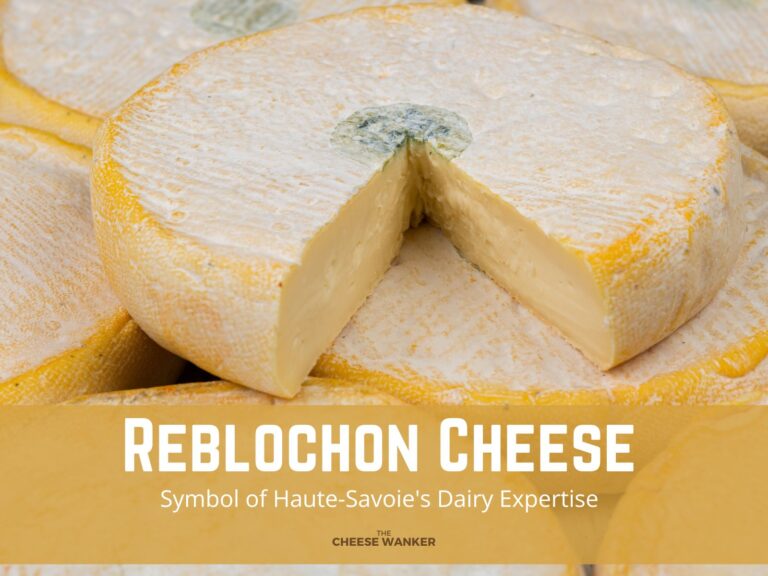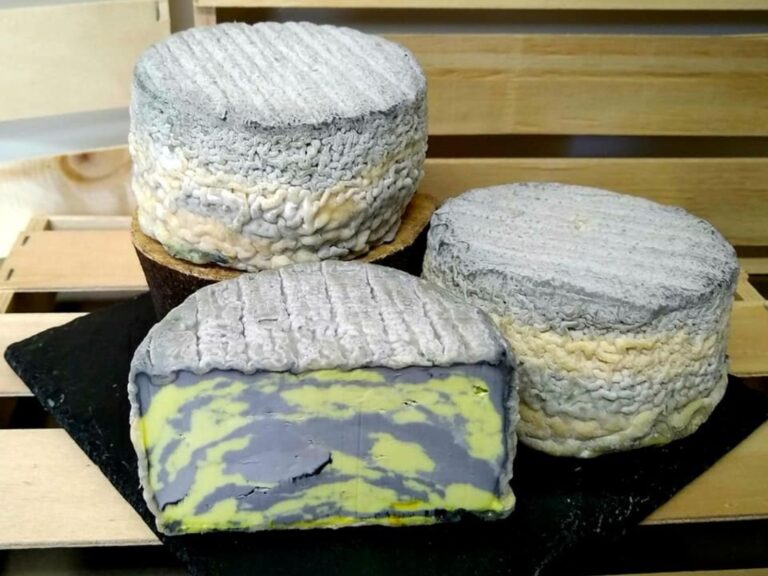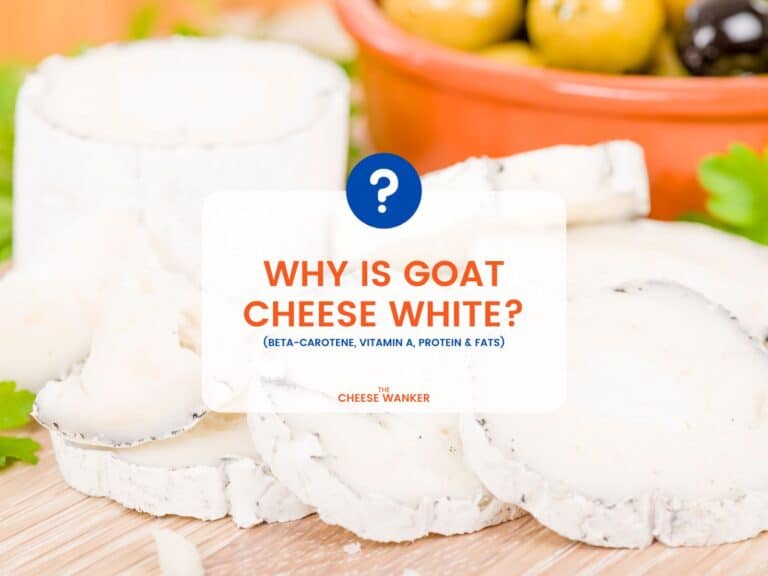If you’re a cheese aficionado, you’ve likely encountered Mimolette, the iconic French cheese known for its striking appearance and distinctive flavour. In this blog post, we’ll delve into the fascinating world of Mimolette, exploring its history, unique appearance, cultural significance, and even its controversial past.
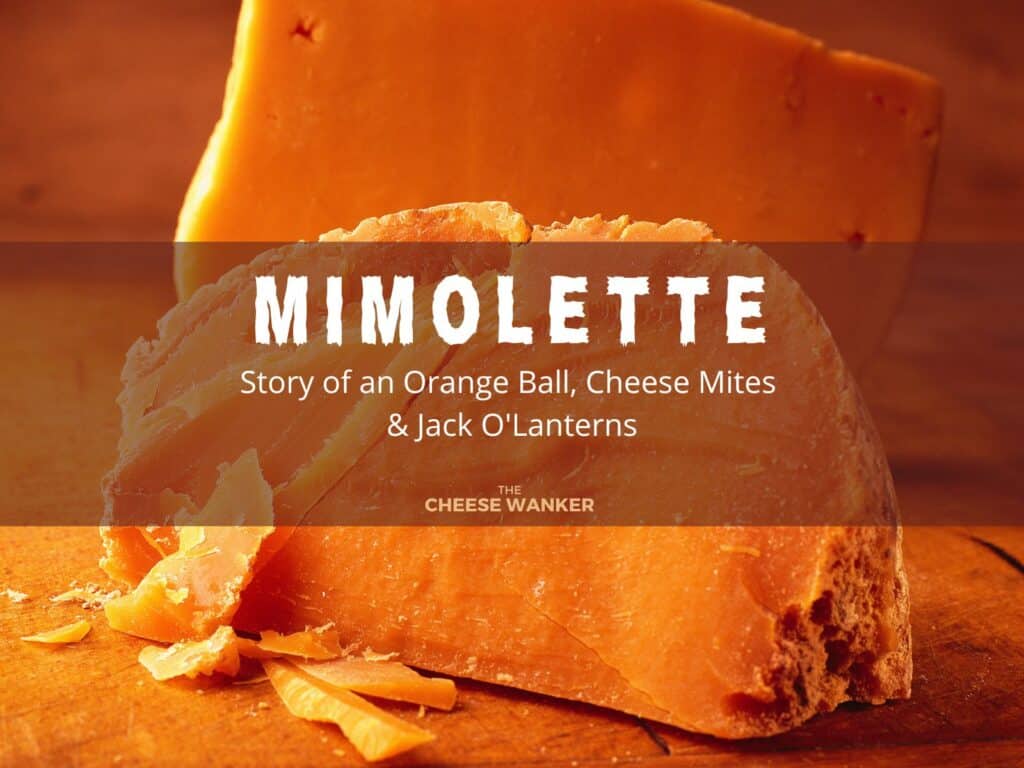
The history of Mimolette
Mimolette cheese has a rich and intriguing history that spans more than a century, encompassing Dutch origins and a French transformation. Let’s embark on a historical journey, complete with a timeline, to explore how Mimolette came to be the beloved cheese we know today.
Dutch origins (early 17th century)
Mimolette’s story begins in the Netherlands, renowned for its cheesemaking prowess. Dutch Edam, a popular cheese variety with its characteristic round shape and mild flavour, was highly prized both locally and abroad.
French adaptation (late 17th century)
In the late 17th century, as Louis XIV of France reigned, the French developed a taste for Dutch Edam. However, due to trade restrictions with the Dutch Republic, obtaining Edam cheese became increasingly challenging.
To satisfy the French appetite for Edam, French cheese makers in the northern regions of Lille and Flanders began crafting their own version of the cheese, inspired by Edam but adapted to local resources and expertise.
Transformation into Mimolette (1700s)
Over time, these French cheesemakers refined their methods, giving rise to a distinct cheese that eventually became known as Mimolette.
By the late 18th century, Mimolette had firmly established itself as a cheese of regional significance in France, cherished for its flavour and striking appearance.
Dutch influence and French artistry
The Dutch influence on Mimolette is evident in its round shape, a nod to the iconic Edam cheese. However, the French added their own artistry to the cheese, transforming it into a true reflection of their cheesemaking traditions.
Indeed, the addition of the natural dye annatto to the milk imparted a bright orange colour to the cheese’s paste. In doing so, the French were able to distinguish their version from Edam.
Where is Mimolette presently made?
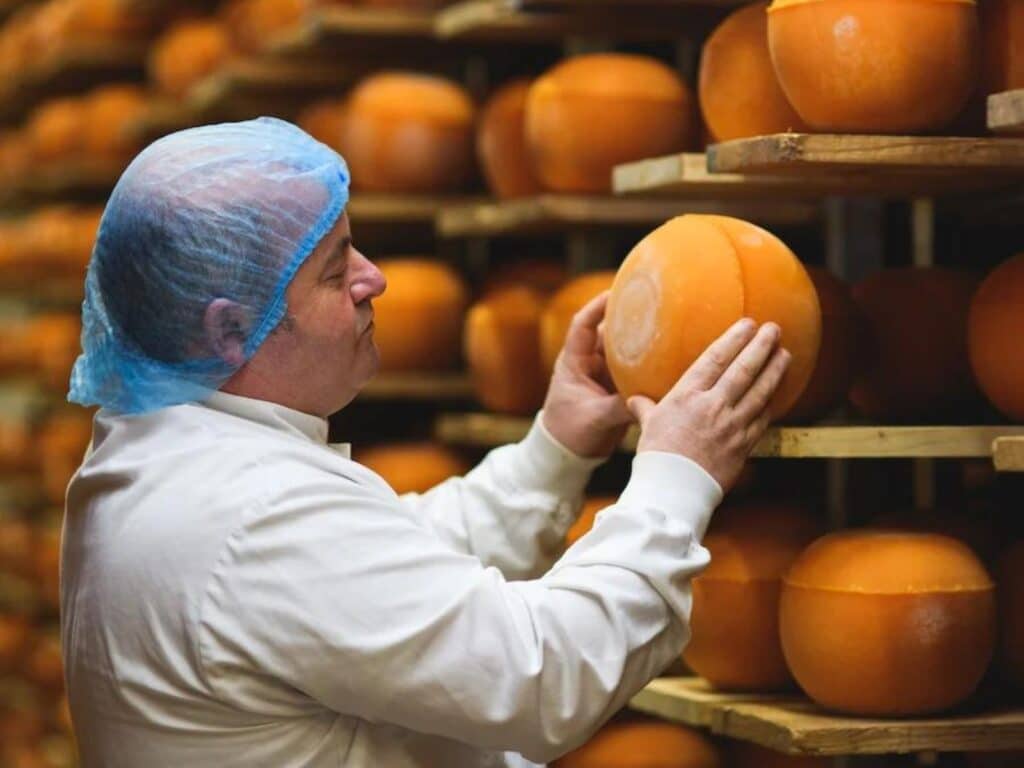
Mimolette is also known as “Boule de Lille” because of its spherical shape and its association with the city of Lille in northern France. “Boule” translates to “ball” in French, and this nickname reflects the cheese’s round and compact appearance.
Lille, a major city in the Hauts-de-France region of France, is renowned for its historical connection to Mimolette production. Mimolette has been produced in this region for more than a century, and Lille has long been a significant hub for the trade and distribution of this cheese.
It’s a common practice in the world of cheese to associate regional names or nicknames with specific types of cheese, emphasizing the cheese’s origin and tradition. So, when you come across “Boule de Lille”, you can be sure you’re encountering the same distinctive cheese known as Mimolette.
What type of cheese is Mimolette
Just like Edam, Mimolette belongs to a category of cheeses called “Pressed Uncooked Cheeses”. As the name indicates, these cheeses are made by pressing curds in moulds to drain excess whey.
Unlike classic European cheeses like Parmigiano Reggiano and Gruyère, the curds are not cooked during production.
Finally, almost every version of Mimolette is made with pasteurised cow’s milk. Some exceptions to this rule are the raw milk Mimolettes made by Fromagerie d’Isa in Brunembert and Frères Bernard in Monts-sur-Guesnes.
How is Mimolette made
While it may not bear an AOP stamp, there is a category of Mimolette called Label Rouge (Red Label) that is protected. One distinct feature of Mimolette Label Rouge is its natural rind. Indeed, some other types of Mimolette are coated in wax before maturation.
Let’s have a look at the meticulous production process for this protected version.
1. Milk handling
Mimolette cheese is crafted using local cow’s milk. After receiving a quality check, the milk undergoes several treatments. The allowed treatments include bactofugation, microfiltration, ultrafiltration, centrifugation and mixing.
It is then pasteurised and standardised before being heated in a vat.
2. Working in the vat and curdling
In the cheese vat, the milk undergoes a series of crucial steps:
- Inoculation with lactic and maturation ferments.
- A milk ripening period of at least 2 hours, achieved by adding mesophilic lactic bacteria.
- Annatto addition, to impart the orange colour.
- Rennet addition, initiating coagulation.
- Coagulation, during which the milk transforms into curd. The resulting curd holds the whey within its structure.
To concentrate the valuable components of milk, namely proteins (casein) and fat, a drainage process is performed to remove excess whey. This involves several operations to achieve the desired dry matter content and prevent potential defects in the cheese, such as a sticky crust.
- Cutting the curd into smaller grains to increase drainage surface area.
- Washing the curd grains to replace some of the whey with water, resulting in a higher pH level.
- Final stirring to complete the process.
Throughout these phases, the curd naturally undergoes gradual acidification.
3. Moulding, pressing and unmoulding
The contents of the cheese vat are transferred to a pre-pressing vat where curd is aggregated after whey filtration. The curd blocks are then cut and placed into moulds. Moulding and pressing give the cheese its shape while further aiding whey drainage through acidification.
The acidification process, initiated during vat work, corresponds to the fermentation of lactose into lactic acid by the added lactic bacteria.
4. Salting
Mimolette cheese is salted by immersion in brine. This imparts a distinctive flavour and influences subsequent ageing.
Moreover, salt affects the development of microorganisms and enzyme activity, serving as a protective role by slowing down these processes. Finally, salting complements the drainage process.
5. Drying
The drying phase, known as ressuyage, involves drying the cheeses after brine immersion to eliminate excess surface moisture.
6. Affinage
Ageing is a crucial step in determining the final quality of the cheese. It involves various biochemical transformations of curd constituents (casein, fat, some soluble milk components) under the action of enzymes, mostly of microbial origin.
Many factors, including atmospheric composition, available water, temperature and pH, influence microbial development and the proliferation of a certain mite. Also, each cheese undergoes care routines such as turning and brushing.
After this ageing process, Mimolette cheese acquires its distinctive organoleptic qualities, including appearance, texture, taste and aroma.
What is Acarus siro?
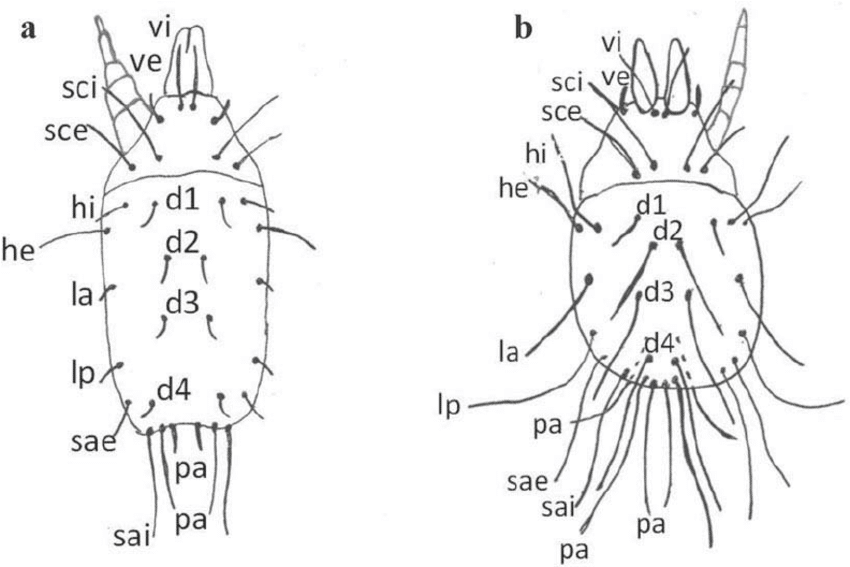
So, let’s talk about this notorious cheese mite!
Commonly known as the “cheese mite” or “flour mite”, Acarus siro is a microscopic arachnid belonging to the family Acaridae. These tiny mites are known for their association with cheese, especially varieties like Mimolette.
Here are some key points about Acarus siro:
Appearance and size
Acarus siro measure only about 0.2 to 0.5 millimeters in length. As a result, it is nearly invisible to the naked eye and can only be seen under a microscope.
Habitat and behavior
These cheese mites are primarily found in the natural environments where cheese is aged. They thrive in dark, damp, and cool places, making cheese ageing cellars an ideal habitat.
Role in cheese ageing
When introduced to the cheese during the production or ageing process, they contribute to the formation of the cheese’s characteristic appearance and flavour.
The mites feed on the cheese’s surface, creating pits and holes, which allow air to penetrate and facilitate the breakdown of fats and proteins. This activity helps develop the cheese’s texture and enhances its flavour.
The different types of Mimolette
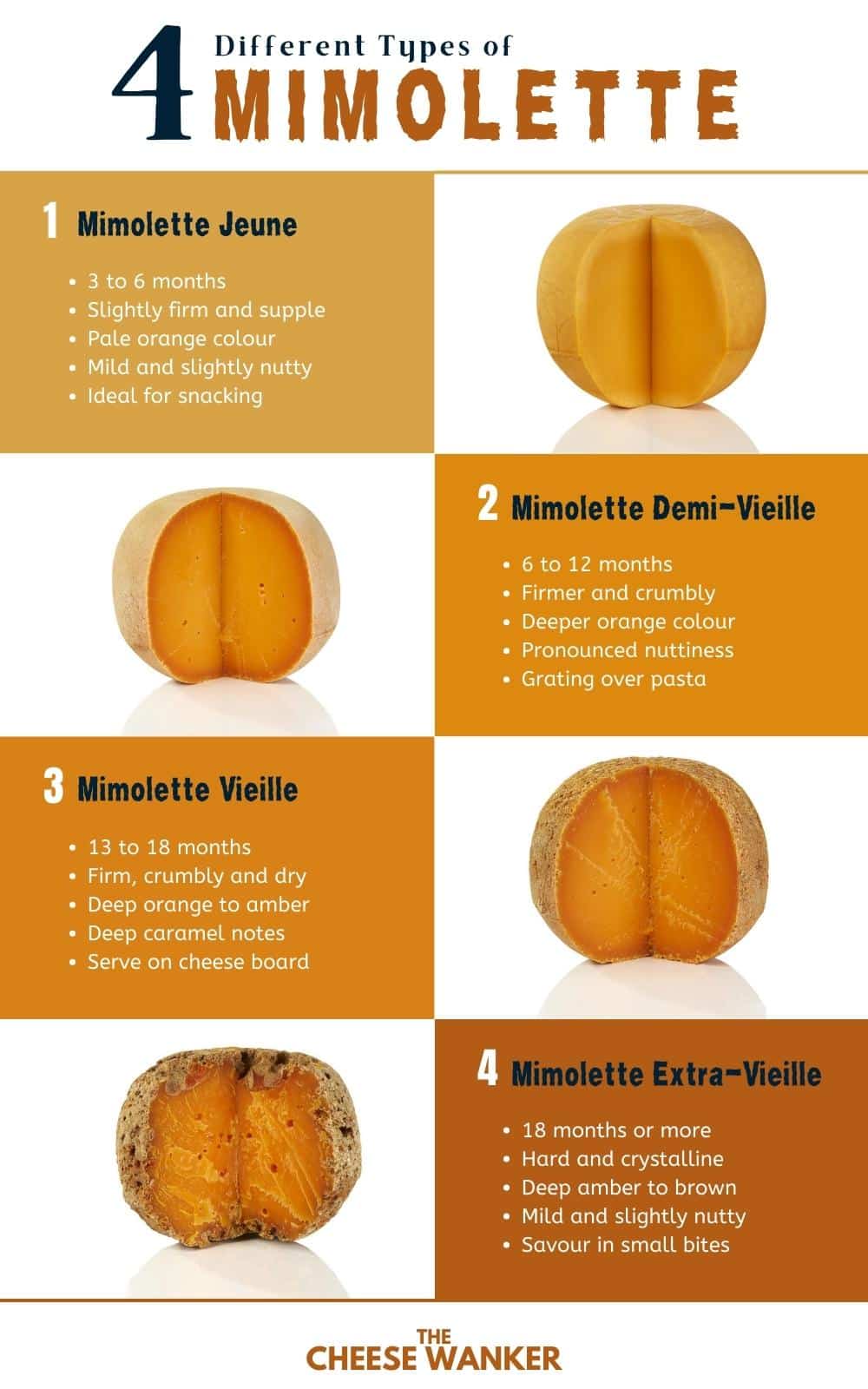
Presently, there are four different types of Mimolette marketed in France. All but one of them is currently available in the USA and Australia, but we’ll get back to that a bit later.
1. Young Mimolette (Mimolette Jeune)
Ageing Period: 3 to 6 months
Texture: Creamy, slightly firm and supple
Flavour Profile: Mild and slightly nutty with a touch of sweetness
Appearance: Pale orange colour, less pronounced pits and crevices on the surface
Best Uses: Young Mimolette is perfect for those who prefer a milder cheese. It’s ideal for snacking, melting on sandwiches or incorporating into salads.
2. Semi-Aged Mimolette (Mimolette Demi-Vieille)
Ageing Period: 6 to 12 months
Texture: Firmer and crumbly, yet still slightly creamy
Flavour Profile: A more pronounced nuttiness with a subtle sweetness
Appearance: Deeper orange colour, developing more pits and crevices as it ages
Best Uses: Semi-aged Mimolette strikes a balance between mild and robust. It’s great for cheese boards, grating over pasta or pairing with charcuterie.
3. Aged Mimolette (Mimolette Vieille)
Ageing Period: 13 to 18 months
Texture: Firm, crumbly and dry, with a crystalline crunch
Flavour Profile: Intensely nutty and complex, with deep caramelized notes
Appearance: Deep orange to amber colour, abundant pits and crevices and a more pronounced crust
Best Uses: Aged Mimolette is a cheese connoisseur’s delight. Enjoy it on its own, alongside wine, or as a standout ingredient in gourmet dishes.
4. Extra-Aged Mimolette (Mimolette Extra-Vieille)
Ageing Period: 18 months or more
Texture: Very firm, crumbly and highly crystalline
Flavour Profile: A rich and intense nuttiness and a long, savoury finish
Appearance: Deep amber to brown colour, an abundance of deep pits and a robust, crusty exterior
Best Uses: Extra-aged Mimolette is a true treasure for cheese enthusiasts. Savour it in small bites, grate it over pasta or risotto or let it shine as the centrepiece of a cheese board.
In summary, the different ages of Mimolette offer a diverse range of taste experiences, from the mild and creamy to the intensely nutty and sweet.
Each age group tells a unique story of the cheese’s transformation, making it a fascinating cheese to explore and enjoy at any stage.
Should you eat the rind of Mimolette?
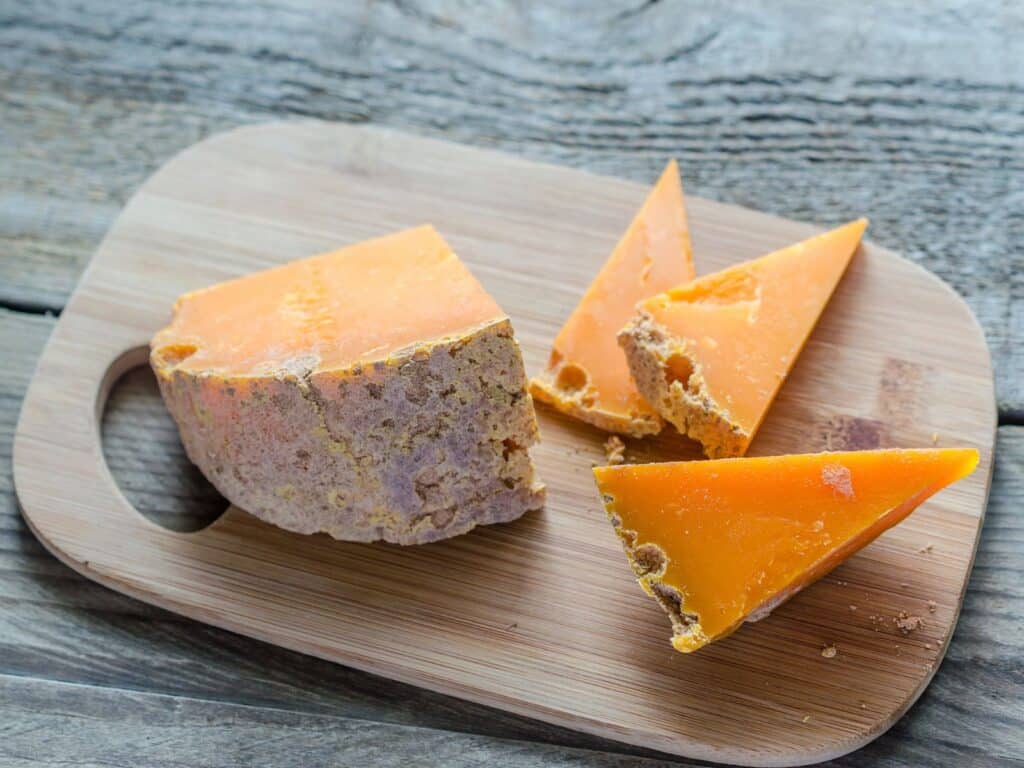
Without a doubt, one of the intriguing aspects of Mimolette cheese is its distinctive rind. It’s a subject that often prompts questions among cheese enthusiasts and newcomers alike: CAN you eat the rind of Mimolette?
The good news for Mimolette aficionados is that the rind of this cheese is entirely edible. What I mean by that is that it does not pose a health risk. Even though cheese mites have been classified as an allergen by the FDA (We’ll get to that soon), there have been no documented cases of toxicity after consumption.
Now, this leads us to our next question: SHOULD you eat the rind of Mimolette?
My recommendation here is to avoid it. While personal preference can vary, I’m not a fan of the tooth-breaking texture and dry mouthfeel.
You can read our complete guide on edible and inedible cheese rinds in this post here.
Controversy and FDA ban in America
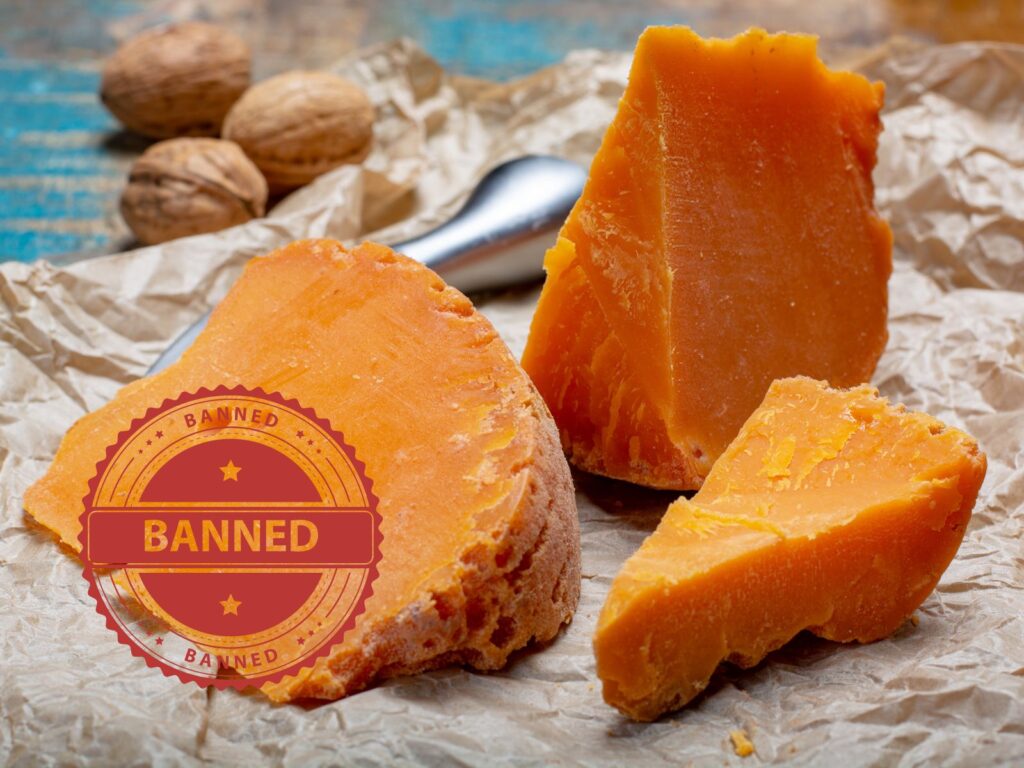
In 2013, the FDA declared Acarus siro an allergen. And upon inspection of a shipment from French exporter Isigny Ste Mère, they reported that the density of those mites on the rind was above their regulation 6 mites per cubic inch.
As a result, the FDA imposed a temporary ban on the sale of Mimolette in the United States. This move sparked a wave of discussions and debates within the cheese community and among Mimolette enthusiasts.
The controversy surrounding Mimolette had several significant repercussions:
Public awareness
The ban brought Mimolette into the spotlight, making it a topic of discussion not only among cheese lovers but also in mainstream media.
Advocacy for Mimolette
Mimolette enthusiasts, including cheese mongers and cheese connoisseurs, advocated for the cheese’s return to the American market. They highlighted its long-standing history, cultural significance, and unique appeal.
Changes in production
To meet FDA regulations, some producers made adjustments to their production process.
These measures may have included adjusting humidity levels, temperature and other factors in ageing rooms to discourage mite proliferation.
Additionally, some producers introduced techniques to minimise the number of visible mites on the cheese’s surface, allowing it to meet regulatory standards while still retaining its character.
A year later, these changes allowed for the return of all versions of Mimolette except Extra-Vieille to American cheese counters.
Impact on Mimolette’s popularity
The controversy surrounding Mimolette had an unintended consequence—it boosted the cheese’s popularity.
Many people who had never heard of Mimolette before became curious about this unique cheese, leading to an increase in demand and interest in exploring other artisanal and specialty cheeses.
Have we piqued your interest? You can read about some other famous European cheeses that have been banned by the FDA here.
Mimolette and Halloween

On the topic of popularity outside of France, there’s no denying that the sales of Mimolette peak around Halloween.
While Mimolette may not be the first thing that comes to mind when you think of Halloween, it can be a surprisingly fun and delicious addition to your celebrations.
Let’s explore how Mimolette can add a touch of elegance and flavour to your spooky festivities.
1. Vibrant orange aesthetics
One of the most striking features of Mimolette is its vibrant orange colour. This hue, reminiscent of a ripe pumpkin, aligns perfectly with the Halloween theme.
Incorporating Mimolette into your Halloween spread can add a pop of colour that enhances the visual appeal of your dishes.
2. Mimolette Jack-O’-Lanterns
Get creative with your Halloween decorations by carving Mimolette cheese instead of traditional pumpkins. Mimolette’s round shape is perfect for sculpting spooky faces or intricate designs.
Furthermore, you can place a tea light inside the carved cheese for a unique and edible twist on the classic Jack-O’-Lantern.
3. Cheese boards with a Halloween twist
Finally, you will certainly elevate your Halloween cheese board with slices of Mimolette. Its bold orange colour and nutty flavour can complement a variety of cured meats, crackers and seasonal fruits.
If you’re looking for more great orange cheeses for your Halloween cheese plate, click here!
Other cheeses with mites
While Mimolette is perhaps the most famous cheese to feature cheese mites, it’s not alone in its journey of collaboration with tiny arachnids.
Several other cheeses around the world also embrace the presence of cheese mites on their rinds, adding unique flavours and textures to the cheese. Let’s explore a few notable examples:
- Milbenkäse: This cheese’s name translates to “mite cheese” in German and is known for its partnership with Tyrolichus casei mites. These cheese mites are introduced to the cheese during the production process. As they feed on the cheese’s surface, they create a distinct appearance and contribute to its flavour profile.
- Cantal Vieux: this aged Cantal is a hard cheese that occasionally features Tyrophagus casei mites on its rind. These mites contribute to the cheese’s maturation process, helping develop its flavour and texture as they feed on the surface.
- Salers: This historical French cheese is known for its distinct production methods and the use of raw cow’s milk. While mites are not used intentionally during its production, they are a common feature on its rugged natural rind.
Conclusion
Mimolette is more than cheese; it’s a testament to the artistry and diversity of the cheese world. From its Dutch origins to its vibrant orange exterior and complex flavour, every aspect of Mimolette invites you to appreciate the craftsmanship behind this French delicacy.
As you embark on your own Mimolette journey, remember that the world of cheese is a rich and flavourful one, waiting for you to explore further.
What’s your favourite age for Mimolette? Let me know in the comments below.
